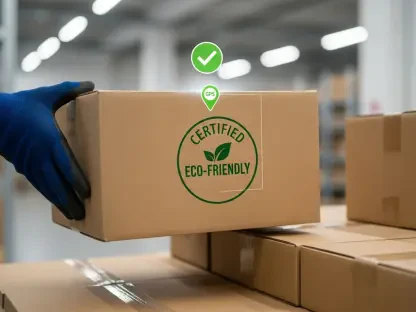In today’s hyperconnected world, APAC enterprises face a daunting challenge: securing their digital assets against a rising tide of cyberthreats. At the CPX 2025 APAC conference in Bangkok, four diverse enterprises shared their journeys towards implementing a security-first strategy to protect their data and infrastructure. Their insights offer a roadmap for organizations aspiring to achieve cyber resilience.
Embracing Digital Transformation
Navigating Legacy Technology
Vector Ltd, based in New Zealand, took significant steps towards modernizing their outdated legacy systems. The company’s Chief Information Security Officer, Aaron McKeown, stressed the importance of a seamless transition to avoid disruption in user performance. He highlighted the critical aspects of planning, change management, and stakeholder engagement in their journey.
Legacy systems, often incompatible with modern cybersecurity measures, represent a significant vulnerability for organizations. Vector Ltd’s workforce, distributed across multiple locations, required a digital transformation that enhanced security without hampering day-to-day operations. The systems nearing the end of their life cycle underscored the urgency of this transformation. Initial stages involved a meticulous assessment of existing systems, identifying gaps and potential risks, and planning a phased transition to ensure all team members were adequately prepared for the change.
Secure Access with SASE Solutions
To counter the obsolescence of their legacy systems, Vector Ltd adopted Check Point’s secure access service edge (SASE) solutions. A pilot program tested the feasibility of the new technology, ensuring a smooth transition for users across multiple locations. This strategic move underscored the importance of well-coordinated and communicated digital transformations.
The pilot phase involved around 120 users over six weeks, allowing the enterprise to iron out any issues before a full-scale rollout. This careful approach ensured that the new systems were fully compatible with the organization’s needs, providing modern authentication methods and enhanced security measures. Effective communication throughout the process helped mitigate user resistance, ensuring that all employees understood the benefits and were prepared for the change. This comprehensive strategy highlighted the importance of stakeholder engagement in achieving a successful digital transformation.
Ensuring Network Integrity
Protecting High-Speed Networks
SingAREN, Singapore’s National Research and Education Network, faced unique challenges in maintaining security over their high-speed networks. Jon Lau, Vice President of SingAREN, shared insights on their solutions to maintain visibility and security without compromising performance.
A primary concern was the risk of cyberthreats exploiting high-speed access to infiltrate connected systems. Maintaining visibility into network traffic was critical for early threat detection and prevention. The organization needed solutions that could offer real-time monitoring without degrading network performance, which is essential for educational and research institutions relying on consistent and swift data transfer. Additionally, as cyber threats became increasingly sophisticated, the need for robust security frameworks became more pressing.
Leveraging Quantum Maestro
By partnering with Check Point, SingAREN implemented the Quantum Maestro hyperscale network security solution. This initiative provided intensified visibility into network threats and optimized data throughput, safeguarding their high-speed networks from global cyberattacks.
The Quantum Maestro solution enabled SingAREN to scale their security measures efficiently, matching the network’s high-speed capabilities. Enhanced threat detection and management allowed the organization to stay ahead of potential breaches. The collaboration also simplified network management, integrating security measures seamlessly into existing infrastructure without compromising performance. This strategic move clearly illustrated how leveraging advanced technologies can effectively counter the increasing number of cyber threats while maintaining optimal network performance.
Managing Multi-Cloud Environments
Cloud Journey Challenges
Virtusa’s eight-year cloud journey exemplifies the complexities of early cloud adoption. Salman Kaleem, Director of Technology and Cloud Security, highlighted the need for visibility across multiple cloud service providers and managing an extensive attack surface.
As cloud environments expanded, so did the complexity of managing security policies across varied platforms. Early cloud adopters like Virtusa faced challenges in ensuring uniform security measures and visibility across different providers. The expanding attack surface demanded sophisticated and scalable solutions that could adapt to varying cloud environments. The organization needed tools to provide real-time insight and centralized management while accommodating the growing demands of a multi-cloud approach.
Centralizing Security Policies
To address these complexities, Virtusa deployed Check Point’s CloudGuard web application firewall (WAF). This allowed centralized management of security policies across multiple cloud environments. The implementation resulted in a more efficient and secure cloud infrastructure.
By integrating CloudGuard, Virtusa managed to streamline their security operations, mitigating the risks associated with disparate cloud providers. The centralized dashboard provided a unified view of the security landscape, simplifying the management of policies and compliance requirements. Automation capabilities enabled quick updates and adaptations to emerging threats, bolstering the overall security framework. This strategic deployment highlighted the importance of adopting scalable and integrated solutions for managing multi-cloud environments effectively.
Securing Digital Ecosystems
Tackling Digital Infrastructure
SCBX, a Thai fintech group, faced the challenge of safeguarding their extensive digital infrastructure. Tony Wongwanich, Head of Group Security Strategy & Advisory, identified critical use cases including dark web monitoring and securing supply chains.
With numerous subsidiaries and a large customer base, SCBX’s digital footprint presented diverse security challenges. Monitoring potential threats on the dark web was crucial for early intervention, preventing data leaks and impersonations that could harm the organization’s reputation. Additionally, securing the supply chain was vital to ensure that third-party vendors complied with SCBX’s robust security standards. The broad attack surface necessitated a comprehensive security strategy to monitor and protect various points of vulnerability.
Adopting External Risk Management
SCBX’s deployment of Check Point’s External Risk Management solution enabled the rapid identification and removal of fake websites and applications. This proactive approach significantly enhanced their cyber resilience and protected their digital ecosystem.
The integrated risk management solution provided SCBX with advanced tools to detect and mitigate threats efficiently. The ability to identify and take down counterfeit digital entities swiftly prevented potential fraud and maintained customer trust. Enhanced monitoring and quick response mechanisms ensured that the organization’s security measures remained adaptive to evolving threats. This proactive stance underscored the importance of continuous vigilance and advanced risk management in securing digital ecosystems.
Building a Resilient Future
The Necessity of a Security-First Approach
The insights shared by Vector Ltd, SingAREN, Virtusa, and SCBX at the CPX 2025 APAC conference highlight the essential nature of a security-first strategy. Their collective experiences underscore the importance of architecture, technology adoption, and continuous vigilance in achieving cyber resilience.
Each enterprise demonstrated particular strategies aligned with their unique requirements but shared a common emphasis on robust planning and proactive measures. Understanding the right architecture for secure connections and adopting scalable solutions were frequently highlighted as critical components. Effective stakeholder engagement throughout the transformation processes also emerged as a vital factor in ensuring smooth transitions and widespread acceptance.
Lessons for Global Enterprises
In our increasingly interconnected world, enterprises in the APAC region are grappling with the critical challenge of securing their digital assets amidst a surge in cyber threats. At the CPX 2025 APAC conference in Bangkok, representatives from four diverse organizations presented their unique journeys toward adopting a security-first approach to safeguard their data and infrastructure. These enterprises provided valuable insights into their strategies, highlighting key practices and lessons learned. Their collective experiences serve as a guide for other organizations striving to bolster their cyber resilience. By prioritizing and implementing robust security measures, these enterprises demonstrate the importance of staying ahead of evolving cyber threats, emphasizing that a proactive and comprehensive approach is essential for safeguarding digital assets. As the digital landscape continues to evolve, their stories offer a valuable roadmap for companies aiming to enhance their cybersecurity posture and protect their critical information in an increasingly threatening environment.









